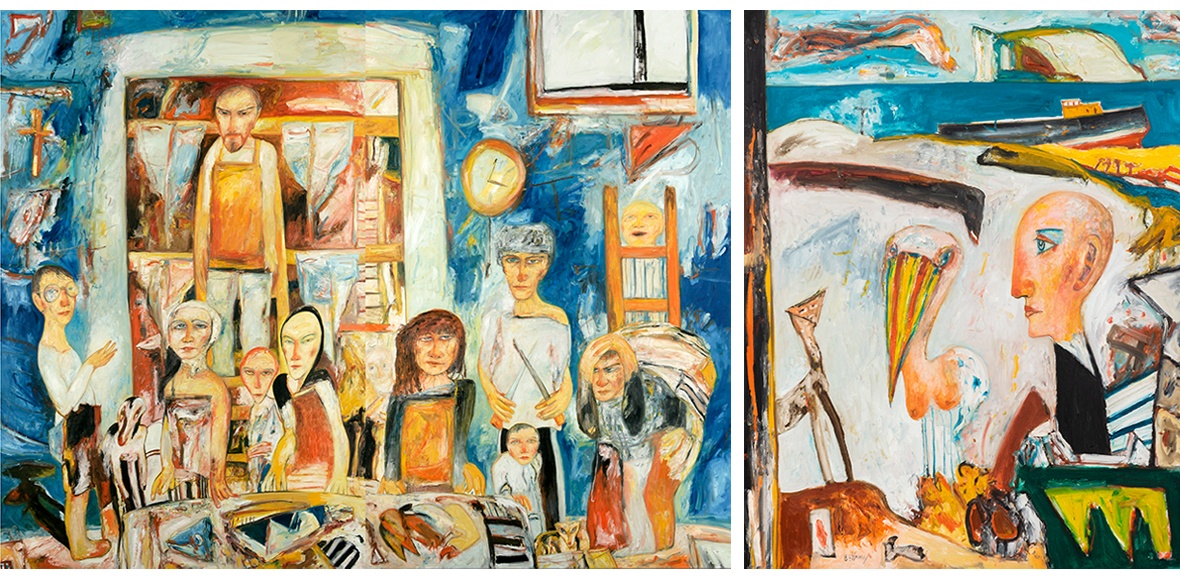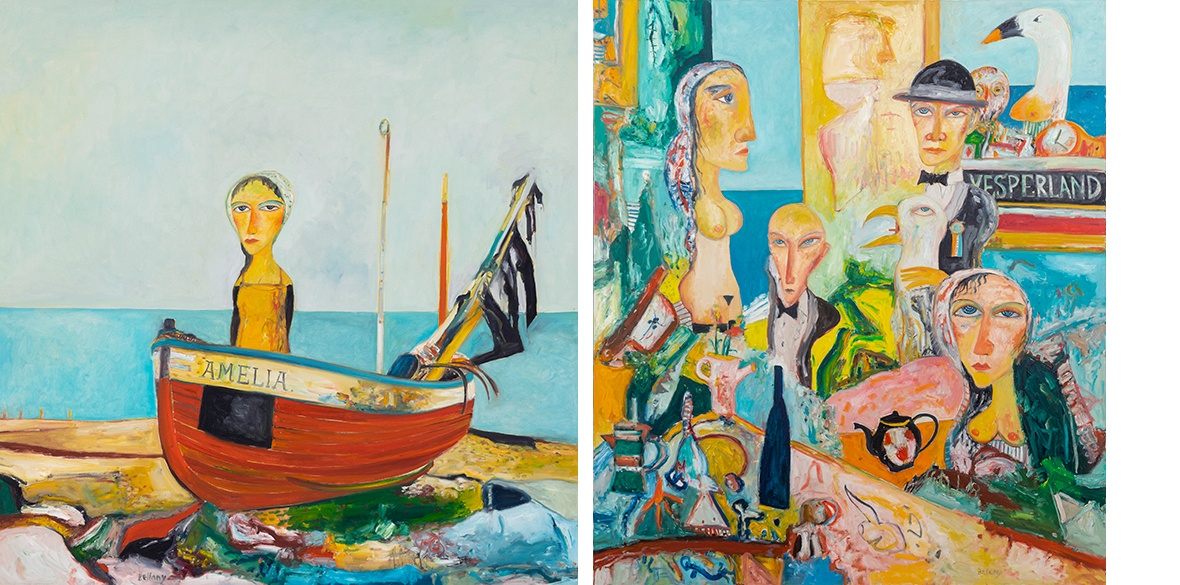This is the last article you can read this month
You can read more article this month
You can read more articles this month
Sorry your limit is up for this month
Reset on:
Please help support the Morning Star by subscribing here
John Bellany
Flowers Gallery, Cork Street, London W1S
JOHN BELLANY’S (1942-2013) paintings are not for the faint hearted. Nor are they meant to be. As troubling as the wild East Lothian sea coast where he was born and reared, they also have tender and poetic passages evocative of the sudden bursts of sunshine in the calm after a storm.
Born in 1942 in Scotland’s sea faring Port Seton to a family of fishermen on both his parent’s side, he remained proud of this tough heritage which permeated his paintings throughout his life.
Yet he broke his community’s seafaring tradition by becoming an artist, studying at the renowned Edinburgh College of Art from the age of 18 and then at London’s prestigious Royal College of Art.
There he was inspired and encouraged by one of his teachers, the Marxist painter Peter de Francia, and by his friend the Marxist critic John Berger. Both championed the social role of art and so, of figurative art at a time when the dominant critical aesthetic favoured abstraction. In 1966 Bellany wrote of his passionate: “belief in the revitalising of a dead tradition to the world.”
Bellany’s working-class consciousness never left him and his works pay homage to the complexities and contradictions of the tough, Calvinist resilience of Port Seton fisherfolk’s lives.
The sensibility which underlies Bellany’s work is closer in spirit to northern and central European art such as Rembrandt’s, Oskar Kokoschka’s, Otto Dix’s and Max Beckman’s — all of whom he much admired.
Early paintings such as the 1967-8 series about the Buchenwald concentration camp which he had recently visited, are raw, angry and politically committed. While nightmarish visions such as Ominous Presence of 1973 in which a couple in bed are separated by a monstrous dog-person and threatened overhead by a headless, naked figure spewing out from the gut of a gigantic fish.
Years of heavy drinking caught up with Bellany and in 1983 he almost died from liver failure, but when he miraculously recovered he never drank again. His subject matter became more poetic and his palette less blood soaked; yet his subject matter remained the sea, the fishing boats, the fish, the gannets, the men, women and children of his native port and were later joined by mythological references as in Odyssey11.
Almost all Bellany’s works in the Flowers gallery date from the 1990s by which time his sensibility had mellowed. His Calvinist rage at social injustice and the religious oppressiveness of his upbringing rarely feature, yet his gusto and spontaneity remained.
With a few exceptions the dourness, the macabre and melodrama of the earlier paintings are replaced by joyful colour and bold sweeping brushwork which convey a zest for life, and for the act of painting itself. But Bellany remained an imaginative, figurative artist and his subjects are never sweetened or idealised.
Most paintings are large, museum-scale works, or suitable for collectors with big homes. Finnan Smokers of 1992 measures 241X317 centimetres so that the figures are life size.
A gathering of people including a child and three babies engage our gaze; but unlike the figures in most group photographs they are unsmiling, their expressions range from angry to bemused, from dreamy to startled. As in several other paintings, fully dressed women inexplicably display their breasts in this mixed company.
While this may perhaps be a challenge to Calvinist prudery, this could also be interpreted as sexist. Although as a friend of mine commented: “they are of their time.”
Untitled (Amelia) of the 1990s is one of the most memorable works in the exhibition yet also one of the smallest and simplest. A fully dressed young woman stands as upright as a Scottish dancer at the prow of a small, fishing boat, she is serious and perhaps defiant rather than sad. The sea behind is calm and blue as is the vast sunlit sky which dominates, and the brush work is truly masterful by keeping this expanse of canvas as mesmerising as abstract art.
Bellany’s work gained early critical recognition and he had numerous solo exhibitions in Scotland and England as well as in Holland, Australia, the US and the Irish Republic during his lifetime and posthumously.
Yet early critical and commercial success did not swerve him from remaining true to his vision. It forms part of a proud Scottish modernist tradition which was unafraid of bold colour, while it shares a sensibility with Scottish folk songs which feature mythical creatures and broad sweeps of imagination.
A tradition which Bellany loved and it is no coincidence that he was also a keen musician and that he included his accordion in some of his pantings. That David Bowie bought Ominous Presence and other Bellany paintings is not surprising since their art shares similar edgy outlooks.
Until August 27 2022. Free.













